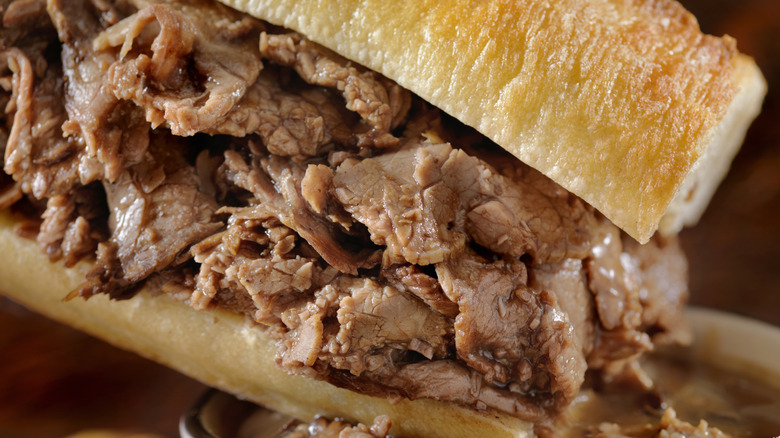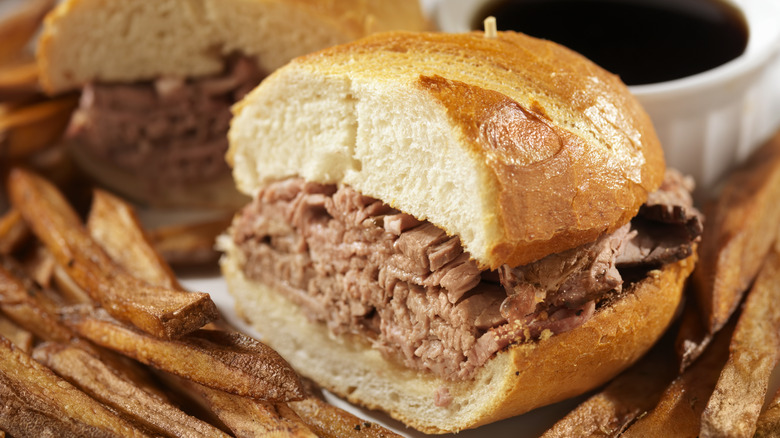Why Crusty Rolls Work Best For Drip Beef Sandwiches
We have a question: Are you now, or are you about to become a convert to the culinary wonder known as the drip beef sandwich? For those not in the know, the drip beef sandwich is a close cousin to the French dip sandwich. The cooking and slicing styles might be different, but each is meant to be dunked in cooking liquid — either au jus or pan drippings. For this reason, you shouldn't make a drip beef sandwich with any old sliced bread, as it will immediately go to pieces. Instead, use a denser roll with a lovely, crisp crust.
After you've slow-cooked a beautiful rump or chuck roast for several hours, it seems like a waste to throw away those gorgeous pan drippings. That's why those geniuses over in France decided to put them in a bowl to use for dipping their thinly sliced beef sandwiches. The originators of the French dip sandwich knew this would work because a traditional baguette (and, by extension, a French roll) is a sturdy affair with a marvelously crisp exterior. The inventors of the drip beef sandwich (where the meat is shredded rather than sliced) also knew they had to employ a more robust bread to handle the liquid. But, doesn't this limit your bread options? We're glad you asked!
Crustiness as a preferred lifestyle choice
Let's talk about crusty breads and rolls — the kind that are ideal for a luscious drip beef sandwich. We've already mentioned baguettes and French rolls, but your options stretch far beyond that. Sourdough rolls work wonderfully; not only can they handle a good dipping but they also bring that distinctive tang to the flavor profile. Fans of New Orleans po' boys will be familiar with the pistolet variant of the baguette, a bread that is airier in texture and has a lighter crust but is still able to handle the dunk.
Italian crusty sandwich rolls are also perfectly suited for making drip beef sandwiches. You might know them as hoagie or sub rolls, but the rustic versions are more sturdy. If you're interested in baking your own bespoke crusty loaf, just remember that the secret ingredient is steam. If you don't happen to have a steam-injected oven, simply fill a robust pan (cast iron works best) with about ½ a cup of hot water and place it in the oven at the very beginning of the bake. The resulting steam helps harden the bread's surface starches into a solid crust; one that will ultimately be able to absorb those delicious pan drippings.

